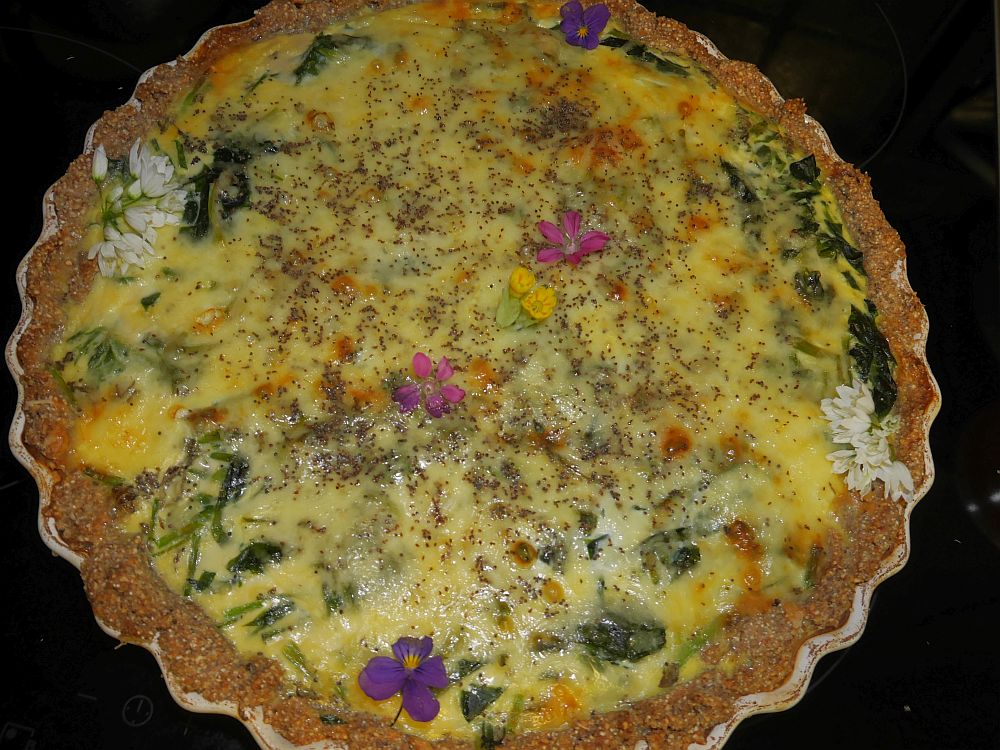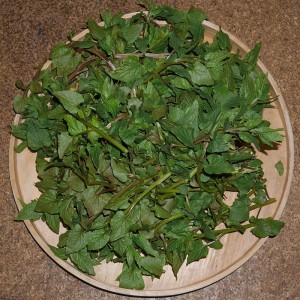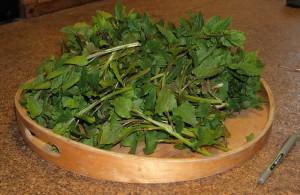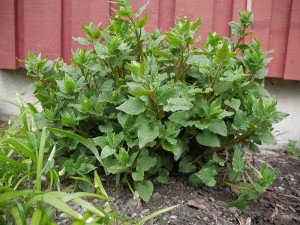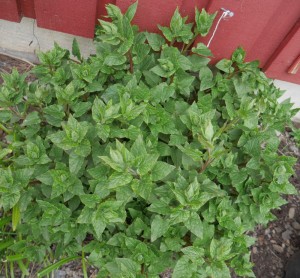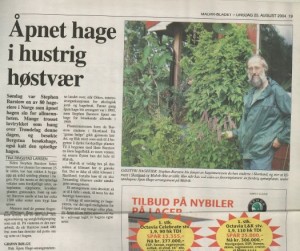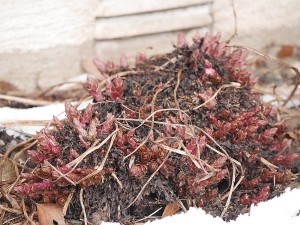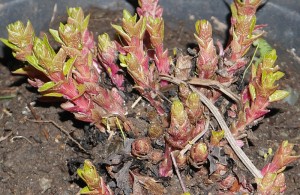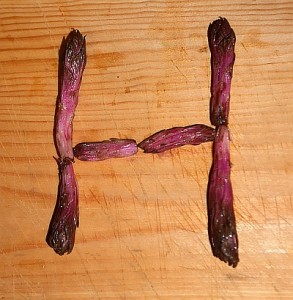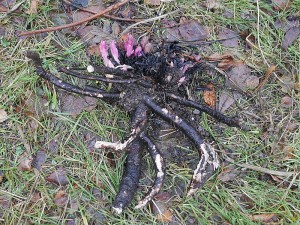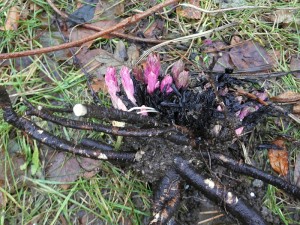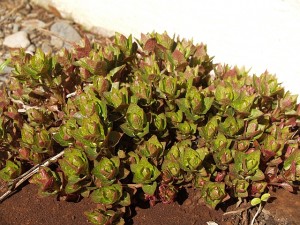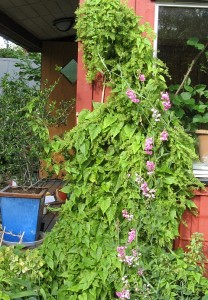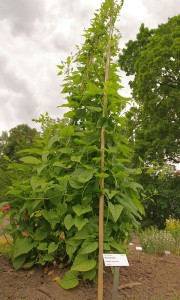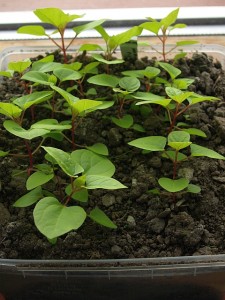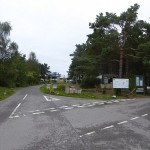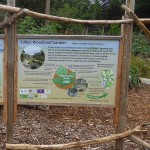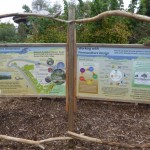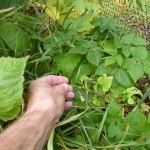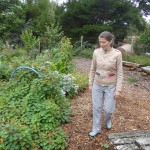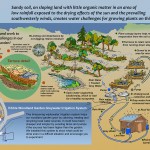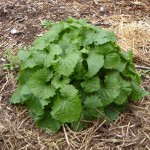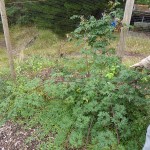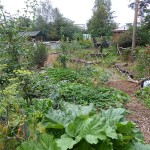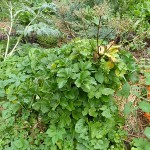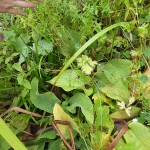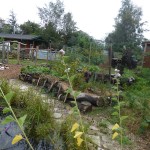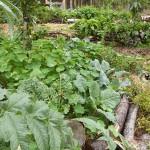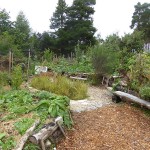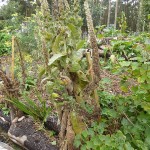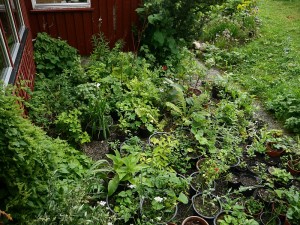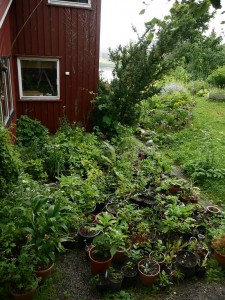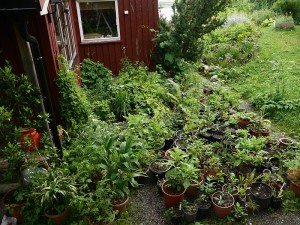Hablitzia roots have an astonishing number of shoots waiting to grow if you cut them down…I like to think that this is an adaptation to human grazing pressure, so that we can repeatedly harvest without killing the plants ;)
Root cuttings work to quickly multiply plants , just ensure you use a sharp knife and have at least one shoot on each root slice! See the pictures!
Tag Archives: Caucasian spinach
Hablitzia-Ramsons-Nettle quiche
Old growth Hablitzia status 4th May 2017!
Prestigious prize to Ronny Staquet for his work with Hablitzia!
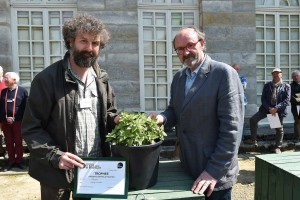

See also https://www.facebook.com/ChateauSJB/posts/1306538149412145 and http://www.domsaintjeanbeauregard.com/les-rendez-vous/fete-des-plantes-de-printemps
I’m proud too as this plant originated in Malvik. Ronny has over the years obtained most of my accessions (some 7 different) in return for help with this web site!! Rumour has it that Ronny has selected a golden leaved Hablitzia from this material!! :) Looking forward to that!
My oldest Hablitzia, already vigorous in 2004!
My 26 February 2017 Hablitzias
Hablitzia excavation
Nutritional analysis of Hablitzia
Time for a celebration
She writes: “Hello Stephen and other Hablitzia friends! Greetings from Finland. I have done my master’s thesis about Hablitzia “Hablitzia tamnoides – a new but old leafy vegetable of early summer: cold stratification of seeds and nutritional value of leaves”. Now I am writing a scientific article about the nutritional value of Hablitzia. Caucasian spinach contains particularly plenty of carotenoids, folates, calcium, magnesium, phosphorus and zinc. Also many other nutritions were larger in Hablitzia than in spinach and New Zealand spianch. In my study the oxalic acid, nitrate, cadmium and lead contents did not outweigh the permissible threshold values. The seeds of Hablitzia need to be stratified either in a cold room or outside during winter in order to germinate. The highest germination rate was 52 %, recorded from the Tampere population stratified at +5 ºC in a cold room. The seeds of Tampere population were picked up in February and sown for stratification in the middle of March. In Finland Hablitzia grows even in Oulu, but wetness of soil kills the plant very easily.”
Findhorn’s Edible Woodland Garden
Ariane has for over twenty years worked on reconnecting people to nature in different ways and in different countries. For example, as a healing response in the aftermath of 9/11 she was commissioned to design and install The Labyrinth for Contemplation, Battery Park in New York (I feel that as I flew back from the US to Europe on that day…). From Findhorn, she inspires, teaches and consults about the transition to our future integrative, regenerative culture, including ecovillage design (see more on her web site here: http://arianeburgess.com
However, it was the new Edible Woodland Garden I’d been invited to see. Nestled next to the Findhorn community, the garden has been designed as a demonstration of how very poor land with a severe water shortage can be turned into a productive edible garden! The project was initiated by the Findhorn Hinterland Trust and more can be found on the trust and the garden at: http://www.findhornhinterland.org/ecology/edible-woodland-garden
See more in the picture gallery below!!
I look forward to visiting again, Ariane Burgess…thanks for showing me round and good luck with your important work :)






